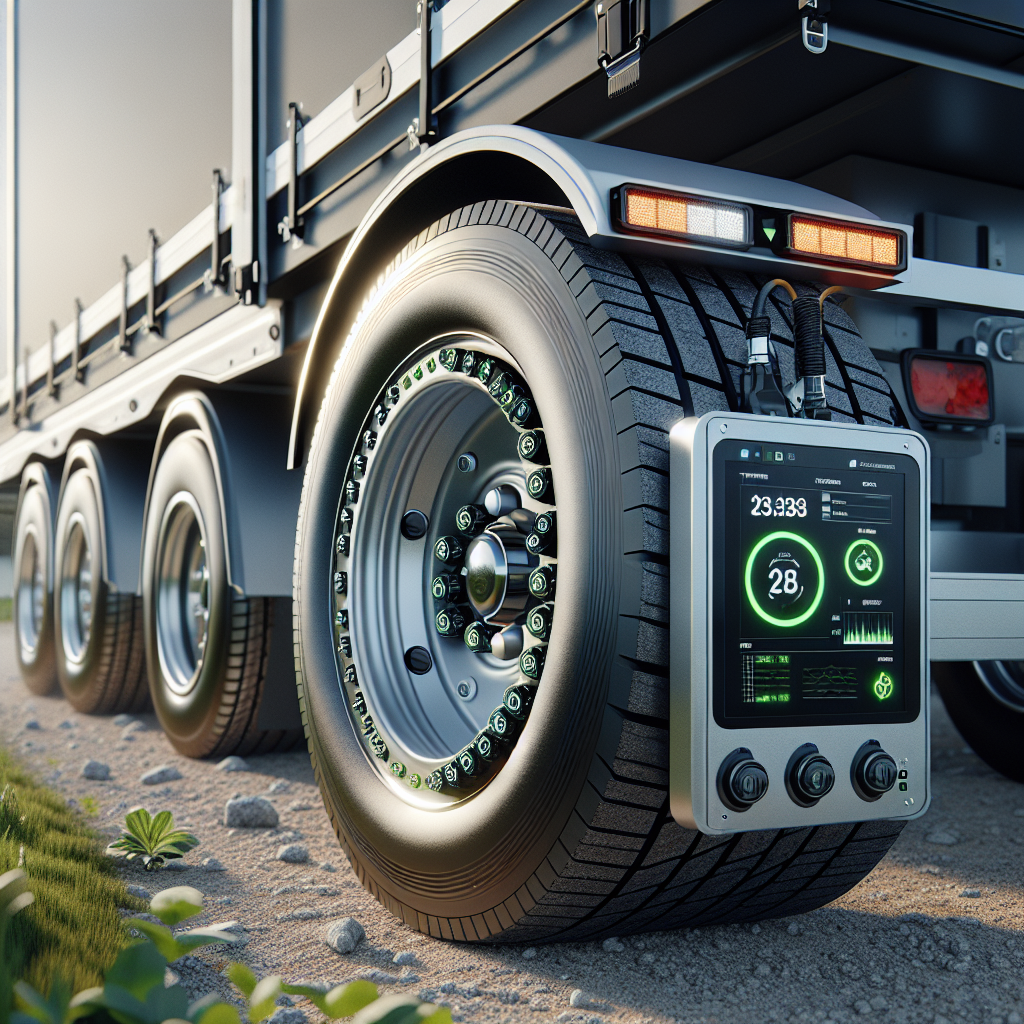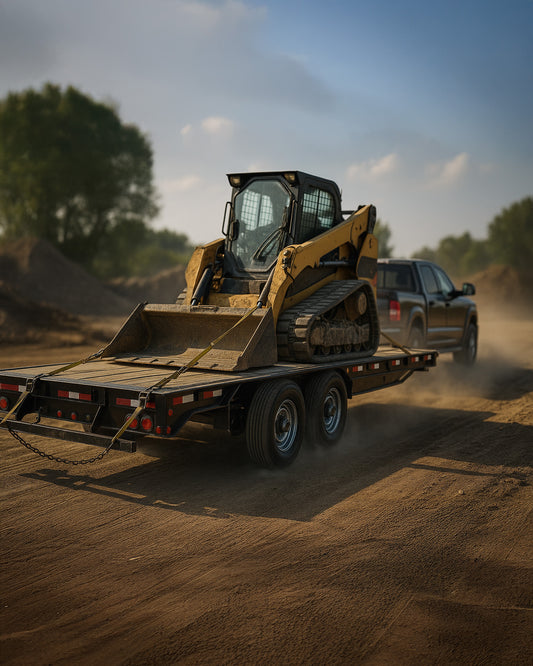

As the demand for enhanced safety and efficiency in transportation grows, tire mobility systems have emerged as a critical innovation for trailer owners and operators. These advanced systems monitor and adjust tire conditions in real-time, ensuring optimal performance and longevity.
Understanding how to use tire mobility systems effectively can significantly reduce the risk of tire-related incidents on the road. By providing essential data on tire pressure, temperature, and overall health, these systems empower drivers to make informed decisions, thereby minimizing the chances of catastrophic failures.
Some of the key benefits of incorporating a tire mobility system include:
- Enhanced Safety: Monitoring tire conditions helps prevent blowouts and accidents.
- Increased Efficiency: Proper tire maintenance improves fuel efficiency and extends tire lifespan.
- Cost Savings: Preventive measures can lead to significant savings on repairs and replacements.
With the right knowledge and tools, users can unlock the full potential of their trailers. As you explore the functionality of tire mobility systems, remember that TrailerWatchdog is here to support you. Tow with peace of mind, knowing that trailerwatchdog is standing guard.
Understanding the Components of Tire Mobility Systems

To effectively utilize tire mobility systems, it is essential to understand their key components and how they work together to enhance trailer safety and performance. Each part plays a vital role in monitoring tire conditions and providing real-time data to the driver.
The primary components of tire mobility systems include:
- Pressure Sensors: These sensors continuously monitor tire pressure, alerting drivers to any significant deviations that could lead to tire failure.
- Temperature Sensors: Overheating tires can cause blowouts. Temperature sensors help track the heat levels of each tire, ensuring they remain within safe operating limits.
- Control Unit: The heart of the tire mobility system, the control unit processes data from sensors and communicates with the driver through alerts or a connected app.
- Wireless Communication: Many systems feature wireless technology that allows for real-time data transmission to smartphones or onboard displays, enabling drivers to monitor tire health easily.
- Battery Power Source: A reliable power source is crucial for the operation of sensors and the control unit, ensuring that the system functions effectively at all times.
By grasping the functions of these components, trailer owners can better appreciate the importance of regular maintenance and updates to their tire mobility systems. Understanding these elements is the first step towards leveraging the full potential of your trailer's safety features.
Step-by-Step Guide to Using Tire Mobility Systems

Implementing a tire mobility system effectively requires a clear understanding of the steps involved in its operation. By following this step-by-step guide, you can ensure optimal performance and safety for your trailer.
Protect your trailer
- Installation: Begin by installing the tire mobility system according to the manufacturer's instructions. This typically involves mounting the pressure and temperature sensors on each tire and connecting the control unit.
- Calibration: Once installed, calibrate the system. This step is crucial for accurate readings. Follow the guidelines provided by the manufacturer to set the initial pressure and temperature thresholds.
- Regular Monitoring: Make it a habit to check the data provided by the system regularly. Many modern systems offer mobile app connectivity, allowing you to monitor tire conditions in real-time from your smartphone.
- Response Protocol: Familiarize yourself with the alerts and notifications that your system provides. If you receive a warning about low pressure or high temperature, take immediate action to address the issue, such as pulling over to inspect the tires.
- Routine Maintenance: Schedule regular maintenance checks for the tire mobility system itself. Ensure that the sensors are functioning correctly, and replace batteries or components as needed to maintain optimal performance.
By adhering to these steps, you can maximize the benefits of your tire mobility system, leading to enhanced safety and performance on the road.
Common Mistakes to Avoid with Tire Mobility Systems

Using a tire mobility system can significantly enhance your trailer's safety and efficiency, but there are common pitfalls that users often encounter. Avoiding these mistakes will help you make the most of your system.
- Neglecting Calibration: Failing to calibrate your tire mobility system after installation can lead to inaccurate readings. Always follow the manufacturer's calibration instructions to ensure precise monitoring.
- Ignoring Alerts: One of the key benefits of a tire mobility system is its ability to alert you to potential issues. Ignoring these alerts can lead to catastrophic failures. Always take warnings seriously and investigate promptly.
- Infrequent Monitoring: Many users forget to regularly check the data provided by their system. Make it a routine to monitor tire pressure and temperature, especially before long trips.
- Overlooking Maintenance: Just like tires, your mobility system requires regular maintenance. Ensure that sensors are clean and functioning correctly, and replace any worn-out components as needed.
- Using Incompatible Equipment: Ensure that the tire mobility system you choose is compatible with your trailer type. Using incompatible systems can lead to improper readings and could compromise safety.
By being aware of these common mistakes and taking proactive measures, you can enhance the longevity and effectiveness of your tire mobility system, ensuring a safer towing experience.
Benefits of Using Tire Mobility Systems for Trailers

Integrating a tire mobility system into your trailer setup offers numerous advantages that can enhance both safety and performance. Here are some key benefits:
- Enhanced Safety: Tire mobility systems provide real-time data on tire pressure and temperature, allowing you to detect issues before they escalate into dangerous situations. This proactive approach significantly reduces the likelihood of tire blowouts.
- Improved Fuel Efficiency: Properly inflated tires contribute to better fuel economy. By monitoring tire conditions, you can maintain optimal pressure, ultimately leading to reduced fuel consumption and lower operating costs.
- Increased Longevity of Tires: Consistent monitoring helps prevent uneven tire wear caused by improper inflation. This not only prolongs the life of your tires but also saves you money on replacements.
- Convenience: Many modern tire mobility systems offer app connectivity, which means you can monitor your tires directly from your smartphone. This convenience allows for quick checks without the need to inspect each tire manually.
- Data-Driven Insights: Tire mobility systems collect valuable data over time, providing insights into tire performance and wear patterns. This information can help you make informed decisions regarding maintenance and replacements.
Incorporating a tire mobility system into your trailer ensures that you not only enhance safety but also improve efficiency and performance, making it a wise investment for any trailer owner.
Conclusion and Best Practices for Tire Mobility Systems
In conclusion, utilizing a tire mobility system is essential for maximizing the safety and efficiency of your trailer. By staying informed about tire conditions and proactively addressing any issues, you can prevent catastrophic failures that could lead to costly repairs or dangerous situations on the road.
To ensure you get the most out of your tire mobility system, consider the following best practices:
- Regular Monitoring: Frequently check your tire pressure and temperature readings. This will help you identify any irregularities early on.
- Maintain Proper Tire Pressure: Adhere to the manufacturer's recommendations for tire pressure to ensure optimal performance and safety.
- Stay Updated: Keep your tire mobility system’s software updated to benefit from the latest features and improvements.
- Educate Yourself: Familiarize yourself with the data provided by your system. Understanding what the readings mean can help you make informed decisions regarding your trailer's maintenance.
- Regular Maintenance: Ensure that your tires are rotated and inspected regularly by professionals to prolong their lifespan.
By implementing these best practices, you will not only enhance the performance of your trailer but also ensure safer travels. Tow with peace of mind, knowing that trailerwatchdog is standing guard.




